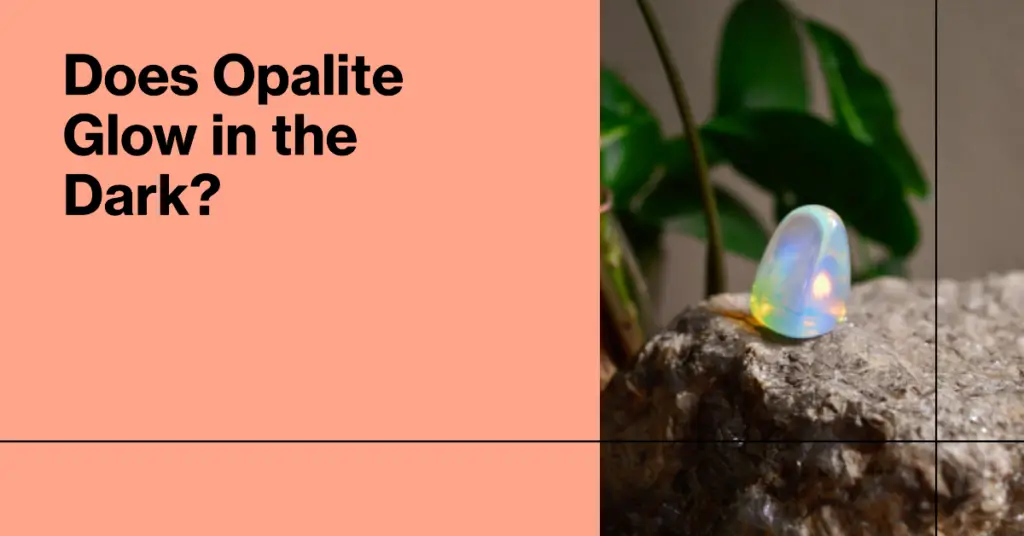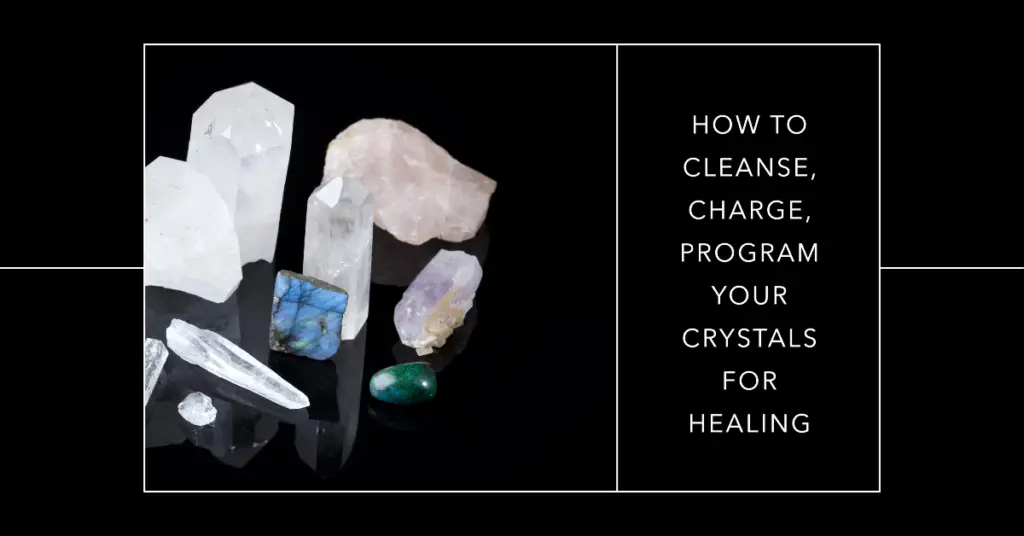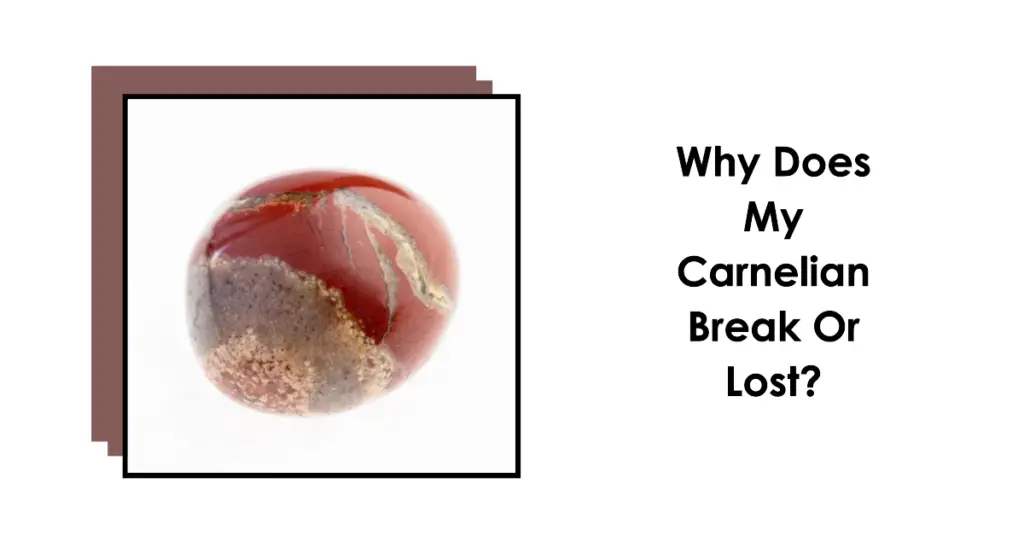Yes!
Opalite is a mesmerizing mineral that exhibits a captivating phenomenon – the ability to gently glow in the darkness after exposure to light. The luminous colors are usually blue, pink, orange
But why does this gemstone radiate light even when the lights go out?
In this article, we’ll explore the science behind opalite’s glow-in-the-dark qualities and what makes this stone literally shine brighter than other minerals.
What Causes the Glow Effect in Opalite?
The reason opalite glows comes down to a phenomenon called phosphorescence. Phosphorescence is the ability for certain materials to absorb energy from light, store it for a period of time, then slowly release it in the form of visible light emission.
In opalite’s case, trace elements of phosphorus, manganese, and copper allow its crystalline structure to capture photons from sunlight or artificial light. The energy excites electrons which later fall back down to ground state and emit photons we see as a glow.
This is the same reason glow-in-the-dark paints, plastics, and other items exhibit that luminous sheen after exposure to light. Opalite demonstrates this natural phosphorescence due to its unique mineral makeup.
What Determines the Strength of the Glow?
Several factors affect the intensity and duration of opalite’s glow:
- Light exposure – The more light the opalite absorbs, the brighter it will shine. Sunlight contains the full visible light spectrum plus ultraviolet rays that supercharge the phosphors.
- Exposure duration – Longer exposure times allow more light energy to be stored. A few hours in sunlight can fuel a glow lasting most of the night.
- Stone color and clarity – Translucent to transparent opalite with few impurities allows more light penetration and glow emission. Blue specimens exhibit the strongest glows.
- Surface quality – A smooth, flawless polish on the opalite allows optimal light absorption and reflection to enhance the glow.
- Ambient darkness – The darker the surroundings, the more the gentle glow stands out. In pitch blackness, opalite shines brilliantly.
With the right conditions, certain pieces of opalite can absorb enough sunlight during the day to emit a vibrant glow for up to 12 hours after dark.

Methods to Make Opalite Glow Brighter
If you want to ramp up the dazzling light show from opalite, there are easy methods to make it glow more powerfully:
- Sunlight – Give the opalite hours of direct sun exposure. The sun’s intense UV rays allow the stone to become supercharged.
- UV flashlight – Handheld UV flashlights blast the stone with concentrated ultraviolet light, creating an instant glow that lasts for hours.
- Jewelry light box – Also called light boxes, these devices use interior LEDs tuned to UV wavelengths that excite the stone’s phosphors in minutes.
- Black light – Black light posters emit UV rays that quickly activate opalite’s glow. Place the stone near the poster for an hour.
- Solar lamps – The ambient light from solar-powered garden lamps provides ongoing exposure to keep the stone glowing gently through the night.
With deliberate exposure to UV light sources, it’s possible to achieve glow durations of up to 24 hours or more after the lights go out!
Observing the Glow Timespan
To experience the full lifecycle of opalite’s glow, observe it from initial activation to final fading:
- First 5 minutes – Right after exposure to a light source, the opalite will glow brightly. This afterglow fade quickly.
- 5-60 minutes – Glow intensity dims but still emits a medium light. Maximum nighttime brilliance is reached during this time.
- 1-6 hours – Light output reduces but still visible in dark conditions. Area near stone emits a soft glow.
- 6-12+ hours – Only a faint residual glow remains but still noticeable close up. Slowly fades overnight.
- Next daylight – Glow fully dissipated by morning. Re-expose to light to repeat the process.
Taking notes on theduration andintenstiy of glow each night can help dial in the optimal exposure time for your opalite specimen. Find the lighting method that makes it shine the longest and brightest through those nighttime hours.
What Are the Best Colors and Sources for Glowing Opalite?
While all opalite demonstrates some level of phosphorescence, certain varieties and sources produce stronger glows:
- Blue opalite – The most highly phosphorescent type, blue opalite can display vivid persistent glows after activating. Found in Oregon and Nevada.
- White opalite – Also called “white fire” opalite, this translucent to clear stone releases a bright glow. Mined in Mexico.
- Peruvian opalite – Vibrant blue and bluish-green specimens from Peru exhibit intense glow under UV light.
- Oregon opalite – Along with blue, glows strongest from Oregon localities like the Owyhee region.
- Mexican opalite – Common source has less glow than other localities but still luminous. Low cost tumbled stones.
For the most dazzling and long-lasting glow, seek out blue opalite sources from the western US or Peru. But even lower grade commercial opalite still provides that signature radiance.

Putting Opalite’s Glow to Use
Once you’ve witnessed the celestial glow from a piece of opalite, you’ll want to put it to good use. Here are some ways to showcase opalite’s phosphorescence:
- Night light – Place an activated stone on a nightstand or shelf to emit a soothing glow in the darkness.
- Pathway illumination – Line walkways with charged opalite stones to create a glowing garden path at night.
- Jewelry centerpiece – An opalite cabochon necklace or ring makes a breathtaking accent piece, especially under black light at events.
- Ambient decoration – Arrange glowing opalite shapes around candle displays or indoor water features for a mesmerizing effect after dark.
- Glowing artwork – Group activated opalite stones to create abstract glowing landscapes and designs. Photograph with long exposure.
The applications are endless when you embrace the luminous qualities of opalite. Give those stones their daily dose of sunshine, then let imagination take over once the lights go down.
Does Opalite Fade or Lose Its Glow Over Time?
Unlike synthetic glow pigments that can degrade over the years, opalite retains its phosphorescence for life. The glow never fades or weakens.
In fact, some specimens seem to exhibit even stronger glows as decades pass. The minerals may undergo gradual atomic level changes that enhance light emission.
Of course, physical damage to the surface can disrupt the release of light. Avoid scratching polished surfaces, and take care not to chip or break stones while cleaning. Also, exposure to excess moisture can dull the finish.
As long as the opalite remains intact with a smooth polish, expect it to continue providing magical glows indefinitely. It’s one of the only phosphorescent minerals that never requires recharging.
Enjoying Opalite’s Glow Safely
Opalite’s phosphorescence is perfectly safe and permanent. But some common sense practices will keep the glow intact:
- Avoid scratching or chipping polished surfaces to maintain integrity.
- Limit water exposure to prevent dulling of the polish from moisture.
- Prevent high impacts that could fracture the stone and disrupt light emission.
- Keep away from extreme heat that may damage the crystalline structure over time.
As long as the opalite remains physically intact, expect its marvelous glow to persist indefinitely. This ancient stone continues emitting its prehistoric light to dazzle our modern nights.
About the Author
Nia Ivy is an intuitive empath, reiki healer, and certified yoga instructor. She teaches workshops on energy healing, developing intuition, and using yoga and meditation to tap into higher states of consciousness. Nia believes we all have innate healing abilities if we cultivate the self-awareness to access them. Her own spiritual awakening came through consistent mindfulness practices. She aims to hold space for others to find their inner light.




